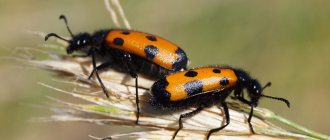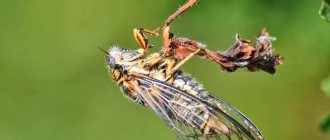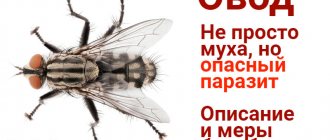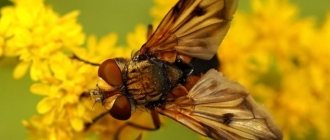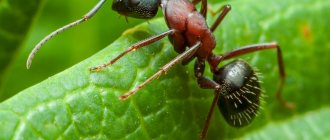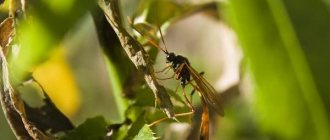Peculiarities
Aquatic insects have protection from getting wet: their body is covered with a thick layer of fluff, a waterproof shell or a layer of fat.
But this does not stop some from flying beautifully. Aquatic insects must store oxygen to be able to live underwater. Breathing patterns vary depending on the species. Many aquatic larvae breathe using gills, small “bags” under the skin. They absorb oxygen in the water through the surface of the body. Thus, this method of breathing is characteristic of the larvae of dragonflies and mayflies.
Mosquito larvae are suspended under the water surface and obtain oxygen from the air using something like breathing tubes.
The swimming beetle and smooth beetle make up reserves of air, which they take on the surface and retain it under the elytra or in the villi covering their body.
mayfly
Sometimes in the spring you can see many tiny winged creatures - mayflies - flying over the surface of a river or lake. Where do they come from? It is from the bottom of these reservoirs. For two years, their larvae live at the bottom, feeding on what accumulates in the silt, and go through multiple molts. And finally, having acquired wings, these creatures fly to the surface. But most of them do not live to see the sun set. That's why they were called mayflies.
mayfly
But they are not the only ones with such a life cycle. Insects whose larvae live in water and adults above water also include stoneflies and caddisflies. Mayflies live all over the globe, except for the Hawaiian Islands, St. Helena Island and Antarctica.
Most insect larvae molt until they develop wings. After this they become adults. However, in mayflies everything happens differently. After going through about 20 molts and acquiring wings, the mayfly turns not into an imago, but into a subimago. This means that she is still unable to reproduce and must molt one more time to finally “grow up.” Thus, the mayfly is an exception among insects.
Mass flight of mayflies from the water
An adult mayfly is easily identified by the three long filaments at the end of its abdomen and its wide, reticulated wings. This insect can often be seen on the stems of various plants and flowers, but the mayfly does not drink nectar or eat leaves. Unlike its own larva, it can no longer consume and digest food - its jaws are not able to perform its function, and its intestines are filled with air. But there is no need for the mayfly to eat. This insect has one task - to lay eggs, after which it soon dies.
Kinds
About 600 species of different swimming beetles are known. The following species live in mid-latitudes:
1. Fringed swimmer . The most common and famous species, as well as the largest specimen. It is distinguished by the presence of an ocher-colored border, which decorates the entire body of the insect. A grown individual reaches 30-35 mm. Such beetles are common in Europe and America, Japan, Transcaucasia and the Sakha Republic.
2. Latissimus swimmer . The largest and rarest species of diving beetles. Adults grow up to 45 mm. They like to settle in bodies of water with clean water and high oxygen content, which is why the population is declining. Listed as an endangered species in the Red Books of several states.
3. Phalarope or striper. It is found in bodies of water with stagnant water, where there is a lot of its favorite food - tadpoles. It is smaller in size than the fringed diving beetle; an adult is 12-16 mm. It can be found wherever there is standing water, as well as small fish and tadpoles, which it grabs and devours with extraordinary speed.
When a life-threatening situation arises, the beetle releases a toxic milky liquid that covers its body. An unpleasant-smelling liquid scares away potential enemies, and they lose interest in it. Beetles are common in Russia, the northern territories of the African continent, the islands of the Sea of Japan and East Asian countries.
4. Diving . These beetles are quite compact in size, growing up to 0.5 cm, and this is their maximum length. Among this type of insect the most familiar are:
- The flat diving fish is a strong and well-fed individual, covered with long and densely growing hairs. The sides and front of the back have an uneven, rough surface;
- The swamp dive is smaller in size even than the flat dive. The maximum value is up to 3.5 mm. It can be identified by the presence of red-red spots located in the eye area. Despite the name, such an individual can be found in forest lakes and slow-flowing rivers. Inhabits vast territories from the Atlantic Ocean to Sakhalin.
5. Prudovik . Lives in wild ponds covered with vegetation. The color is dirty brown, the wings are covered with a pattern in the form of transverse notches.
Food chain - mayfly to human
All living things need energy to maintain life, which they get from food. Herbivores eat grass, and carnivores eat herbivores. This is how food chains are formed. And stoneflies are also included in a similar chain. Thus, stonefly larvae eat mayfly larvae, and are themselves eaten by freshwater fish, such as grayling from the salmon family. And to catch grayling, fishermen use stoneflies as bait. This is how a food chain is created: mayfly - stonefly - grayling - human.
A food chain is a series of different species of plants, animals and other living organisms connected to each other by food-consumer relationships.
Caddis flies
Another common aquatic insect is caddisfly (order Trichoptera). Adult caddisflies resemble moths in appearance. Their coloring is inconspicuous, dark tones. They fly poorly and little; they can run on the surface of the water. These aquatic inhabitants have long antennae, and their wings are folded and covered with hairs. They do not live long and hardly eat. Caddisfly larvae are a completely different matter. They live 2–3 years, lead an aquatic lifestyle and are found in large numbers in various bodies of water, where they crawl along the bottom or along the lower parts of plants.
Adult caddisfly
Most caddisfly larvae live in special cases, creating them from a wide variety of materials: pieces of leaves, fragments of bark, sticks, moss, pine needles, grains of sand and small shells.
A caddisfly larva in its unusual house
The larvae feed by scraping soft plant tissue with their serrated jaws. Sometimes they also feast on animal food. Some of them are strainers, water filters.
Vigilant twirler
Sometimes on the surface of reservoirs you can see small bugs, no more than a centimeter in length, that quickly, in zigzags, swim along the water surface in search of food. Examining the spinner under a magnifying glass, you can see that her eyes are looking up. But how then does she hunt insects that are under water? It turns out that the spinner has another pair of visual organs, directed downwards. But still, she has not four eyes, but two, just each of them is divided into two halves by a “bridge” of chitin, which significantly increases her visibility.
Vigilant twirler
Brooks
The caddisfly, unlike mayflies and stoneflies, is an insect with complete metamorphosis. However, its larvae also live at the bottom of reservoirs, serve as food for fish and are good bait for catching them. They differ from other insects in that they build shelter houses for themselves. As building materials, caddisflies use plant remains and shells of various river mollusks. In case of danger, the insect climbs into its house and closes the entrance with its own head, covered with durable chitin.
First appearance
Bark beetle
Bark beetles are the larvae of wood-boring beetles that lay eggs behind the bark of old trees and stumps. Often at the dacha, when clearing firewood from the bark, you can see numerous holes and passages in the wood, and worms in these passages; these are bark beetles. These larvae reach a small size and therefore they are placed on a hook in several pieces. They store bark beetles in sawdust and use them to catch a lot of river fish, but especially bream.
Pennywort
The large dark water lover - this name accurately reflects the properties of this beetle. And although this is not the largest of the beetles, it is the largest of the water-loving family. After all, if the smallest representatives of this family reach only 1 mm in length, then the large dark water lover can grow up to 48 mm. And the color of his elytra is really dark - black with an olive tint, and he loves water very much. True, the larva, in order to pupate and turn into an imago, comes ashore and burrows into the ground. But as soon as an adult beetle emerges from the pupa, it immediately hurries to the water, where it spends its entire life, feeding on small algae and sometimes mosquito pupae.
Big dark water lover



